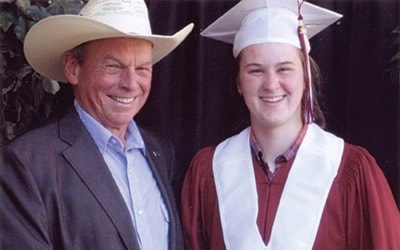This year marks the 100th anniversary of the Coombs Farmers Institute and though it has faded somewhat over that time, president Colin Springford believes there could be a bright future for the organization — and for agriculture in general.
However, there are going to have to be some changes to the way consumers and the government deal with the agriculture sector for that future to materialize, say the insitute's leadership.
Springford, along with past president Sam Pickard and secretary Andy Brown, said a number of preconditions need to come to fruition before farmers can return to their former position as prime movers in the Vancouver Island economy.
One of the most pressing problems, said Pickard, is the skyrocketing price of land — and its plummeting availability.
"Kids can't afford the land base," he said. "Density has increased dramatically on the Island and agricultural land has become alienated, through timber companies or through residential areas. The base at which you start, the land base, has become prohibitive for young people to get in."
That lack of new blood in the agriculture field is reflected in the membership in the institute, which has dropped to just over a dozen members — most of them aged 50 or older.
"We just don't get the kind of membership we used to," Pickard said. "When I first went to a meeting in the 1960s, the hall was packed with 35 or 40 people. The number of people who are making a living from agriculture in this area has dropped dramatically."
As an example, he cited the dairy sector. "A telling statistic is when I moved here in 1961, there were 35 dairy farms from Nanoose Bay to Qualicum Bay and today there are three — although they produce more milk than the 35 did."
Brown agreed, noting it's a situation that's not unique to Vancouver Island.
"Only about two per cent of citizens in Canada grow food," he said.
There's a good reason for that. With the low price of food in Canada — one of the lowest if not the lowest on the planet — it's difficult to make a living at producing it.
"Canadians are paying the smallest amount of disposable income in the world on food," Pickard said. "We are just around 16 per cent, while a family in Mexico City spends about 90 per cent. If we were spending more of our disposable income on food, it would cause more people to go back into agriculture. It would make it worthwhile."
Springford added that cheap, imported food from countries with extremely low wage rates also cause a problem, relating how a Lantzville farmer used to pick up cardboard boxes from a pub and found the boxes of chicken wings were stamped as a product of China.
"We have good poultry here," he said. "Why do we have to bring chicken from China so a pub in Lantzville can serve chicken wings?"
Another challenge is marketing.
"We had an agricultural committee workshop and someone said he could plant every acre I've got into food and it would end up plowed under as fancy mulch, because ... there's just not the marketing setup for local produce to allow me to produce it on the scale I could," Brown said.
Pickard agreed.
"I know a guy in the Alberni Valley who said he could produce food but he couldn't market it," he said. "He used to grow fantastic onions, but the marketing board offered him a cent and a half a pound, so he fed them to his cattle. He said you could sure smell the cows. They ate them like candy."
As well, increasing demands for water is an issue that limits the amount of farming that can be done in an area.
The news isn't all bad however. The growth in popularity of farmers' markets and organic food — as well as an increase in farm-gate sales — is one bright spot on the horizon.
"Organic food and farmers markets have helped in general because of public awareness and people wanting food sustainability and local produce," Springford said. "The general public's awareness of local food and produce has had a benefit to us because we are selling beef off the farm gate in small quantities. People are all over that. Silver Meadow Farm used to be just a corn stand and now it has a little store."
The push for local food is accelerating, with the University of Victoria making a point of serving a percentage of local food and the Regional District of Nanaimo has made the production of food a higher priority.
The challenges are daunting, but, as wartime victory gardens showed in the 1940s, it's amazing what people can grow when they have the motivation.
"Canadians are hard-working and efficient," Pickard said. "Agriculture here is also very efficient right now, and we are blessed with certain types of crops which are ideal. For instance, parts of the prairies are the best in the world to grow grain."
The reason why agriculture is such a low priority is fairly simple.
"Until food availability becomes a priority, we won't see that much change," Pickard said.
"A clear majority of people in Canada have never really appreciated what it is to get really hungry," Springford said.
